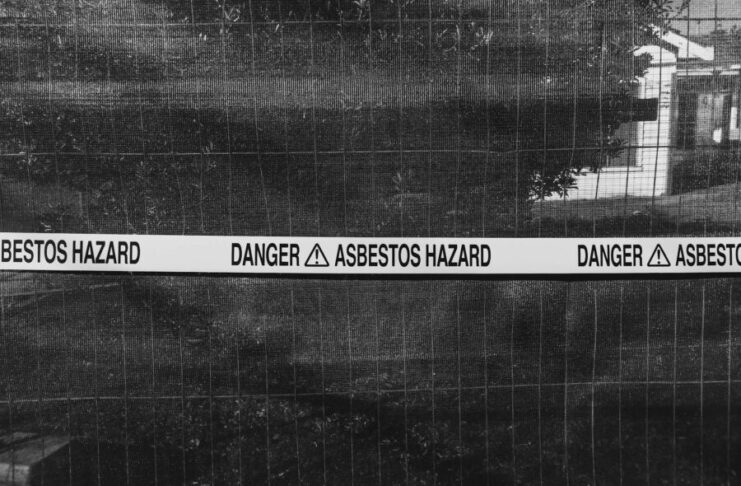Every year, more than 2,200 people die from mesothelioma, a deadly cancer caused by workplace asbestos exposure. It kills more people than workplace accidents, road crashes, or homicides, yet it receives a fraction of the attention.
Unlike sudden workplace accidents, mesothelioma deaths happen quietly, decades after exposure, making them invisible in real-time workplace fatality statistics.
In 2023/24, 138 people died in workplace accidents, a figure that is widely reported and used to push for improved health and safety measures. In the same year, 2,257 people died from mesothelioma, a disease that can be traced directly to workplace exposure, yet these deaths are not counted in the same way. If asbestos exposure is a known cause, why is mesothelioma still killing thousands of people each year?
How Mesothelioma Compares to Other Major Causes of Death
The fatality rate for mesothelioma in Great Britain is 4.5 per 100,000 people, a figure that far exceeds workplace accident fatalities – yet rarely enters public debate. Mesothelioma claims more lives each year than road traffic accidents or homicides, yet public awareness remains low.
The fatality rate for workplace accidents is 0.42 per 100,000, a number that rightly receives attention and leads to immediate intervention. By comparison, the fatality rate for road traffic accidents is 2.4 per 100,000, for suicide it is 10 per 100,000, and for homicide it is 1 per 100,000. Influenza and pneumonia, which cause significant health concerns each year, have a fatality rate of 50 per 100,000.
The numbers make it clear that mesothelioma is not a rare or insignificant disease.
The Workers Still Paying the Price for the Past
Mesothelioma develops over decades, meaning that today’s victims were exposed to asbestos in workplaces as far back as the 1970s and 1980s. The highest mesothelioma death rate is among those aged 85 and over, with 60 percent of all mesothelioma deaths occurring in people aged 75 and older.
The long latency period between exposure and diagnosis means that many victims are only aware of their condition when treatment options are limited. The lowest death rate is found among those aged 45 to 49, reflecting a decline in workplace asbestos exposure after regulations were introduced.
The construction industry has the highest mesothelioma death rate, with many former workers having been exposed before asbestos bans came into effect. Shipbuilding, manufacturing, and other industrial trades also report high rates, showing the long-term consequences of past exposure.
The highest mesothelioma mortality rates are recorded in the North East of England and other historically industrial regions, where asbestos use was common in shipyards, factories, and heavy industry. Areas with less industrial activity show significantly lower death rates.
Why Mesothelioma Is Still a Killer
Although asbestos was banned decades ago, it continues to kill thousands of people each year. Many older schools, hospitals, and public buildings still contain asbestos, meaning that exposure risks have not disappeared. Asbestos is not just a problem of the past but remains a modern health risk. The misconception that it is no longer an issue prevents action from being taken to address the dangers still present in many buildings today.
A mesothelioma diagnosis is almost always fatal, with an average survival time of just 12 to 21 months. Unlike other cancers, there have been few long-term treatment breakthroughs, making prevention the only effective solution. The disease does not just claim lives but leaves families devastated. Many victims suffer painful symptoms, loss of independence, and financial strain, often unaware that they had been exposed to asbestos until it was too late.
The suffering caused by mesothelioma is not limited to those directly affected. Families often become full-time carers, watching loved ones deteriorate while facing financial hardship. The long-term financial impact on the UK is also substantial, with the costs of mesothelioma treatment, compensation claims, and the economic loss associated with premature death running into hundreds of millions of pounds.
A Workplace Health Disaster
Many people diagnosed with mesothelioma are eligible to make a claim for compensation, as the disease is directly linked to historical workplace exposure to asbestos. Legal options exist for those who were exposed at work, even if the responsible employer no longer exists.
The UK ignored the dangers of asbestos for too long, and as a result, thousands of people are now dying from exposure that could have been prevented. Workplace protections came too late, and the price is still being paid decades later. The same mistakes risk being repeated today.
Modern workplaces expose workers to hazards that could become the next mesothelioma crisis. Silica dust, which is common in construction, has been linked to deadly lung diseases, yet exposure controls are still weak. Diesel fumes, classified as a carcinogen, continue to pose a risk to workers, despite clear evidence of harm. Toxic chemicals used in industrial processes may have long-term consequences that have yet to be fully recognised. The pattern is clear: what is dismissed today could become the next workplace health disaster in the future.
What Needs to Change? Making Mesothelioma Matter
The first step in preventing future deaths is recognising that mesothelioma is not just a problem of the past but a crisis that continues today. Greater public awareness is needed so that people understand the ongoing risk of asbestos-related disease. The idea that asbestos is no longer a threat must be challenged, particularly as many schools, hospitals, and offices still contain the material.
Policies to remove asbestos from public buildings must be strengthened to ensure that no one is exposed to this deadly substance in the future. Investment in mesothelioma research remains low compared to other cancers, limiting the possibility of developing new treatments.
More funding is needed to explore better options for those who are diagnosed. Workplace protections must also be strengthened to ensure that today’s workers are not exposed to materials that could cause similar health crises in decades to come.
Mesothelioma is not just an old problem. It is a public health crisis that continues to take lives, and without greater awareness, prevention, and action, thousands more will continue to die from a disease that should no longer exist.

Stuart Snape is a specialist in serious injury claims. With over 20 years of experience, he leads the firm's strategic direction while continuing to represent clients with complex, high-value cases involving life-changing injuries.
Known for his clear, pragmatic advice and commitment to client care, Stuart has helped grow the firm into one of the North West's most respected personal injury practices. He also mentors junior lawyers and champions access to justice across the sector.


